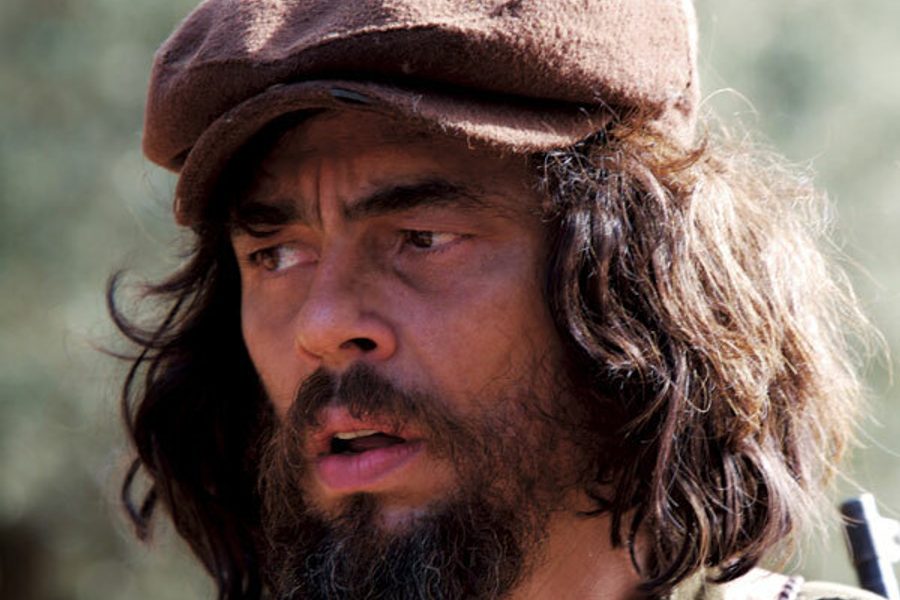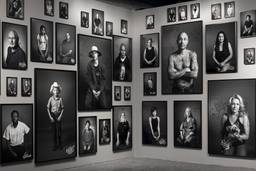
All biographical films garner charges of omissions; director Steven Soderbergh’s Che actively courts them. The worst way to approach this two-part, four-and-a-half-hour anti-biopic is to see it as a film expressly about Ernesto “Che” Guevara.
Those who expect a full portrait of the man will be confronted with a film that boldly declines to imagine its subject’s psychology or personal life. Those who expect a hagiography will be surprised to find that the film consists of nearly four and a half hours of grueling guerrilla tactics.
When I interviewed Soderbergh at the Toronto International Film Festival in September, he said that one of his goals was to pick scenes that would occur “before or after the scene[s] that you would typically see in a movie like this.” Soderbergh has also suggested to the press that the film’s real subject is political engagement – that is, what it means to truly commit to an ideology. It’s one thing to promise hospitals and food; it’s quite another to march through the jungle for more than a year in the name of overhauling a society.
It’s true that Che–which focuses exclusively on Guevara’s Cuba and Bolivia campaigns – offers little counterargument to those looking for a more critical examination. By design, the Cuba-Bolivia contrast problematically skips over the period from roughly 1959 to 1965, which saw Che’s brutality as Castro’s commander-executioner at La Cabaña fortress in Havana and his persecution of dissidents and homosexuals. In A.O. Scott’s New York Times review, the critic chastised the film for failing to offer a “moral reckoning.”
But if that omission seems troublesome, it’s worth considering that the movie omits almost everything else – context, character, even drama. Its approach to history is largely on a footnote level: The narrative emerges obliquely, and major figures remain confined to the margins.
The dialectical structure attempts to be true to Marxist ideas – in form as well as content. The movie’s two halves adopt different color schemes, different tempos, different approaches to chronology and even different aspect ratios, contrasting two revolutions similar in theory but markedly different in outcome. The first campaign succeeds. In the second, Che’s asthma acts up, the Bolivian government’s counterpropaganda works and the peasants fail to rally to his cause – a combination of factors that ultimately lead to Che’s capture and, on Day 341, his execution.
Che: Part One’s first chronological scene finds Che (a powerfully reserved Benicio Del Toro) meeting Castro (Demián Bichir) in Mexico City in 1955. They board the Granma, their boat to Cuba, and from then on, the film depicts the march through the Sierra Maestra mountains to Santa Clara, the site of the guerillas’ decisive battle.
Soderbergh alternates between this process and Che’s 1964 visit to the United Nations, using an interview with TV journalist Lisa Howard (an offscreen Julia Ormond) as voiceover. In both chronologies, Soderbergh takes pains to depict Che externally, presenting him as he presented himself to others and ostensibly deriving his speeches from actual oratory and writings.
Although there are dramatic peaks in the march – a clash with Castro over how to deal with factionalism, the siege of Santa Clara–Che: Part One focuses on scenes of recruiting peasants, treating the sick and chastising weary soldiers. The movie approaches Che through indirection, and the darker, intransigent side of his ideology can be seen in the protesters visible at the United Nations or in Che’s call to execute a deserter before the soldier can make a final confession.
It’s suggestive of the film’s approach that after its Cannes premiere in May, Soderbergh removed a scene involving the trial of Lalo Sardiñas, a captain who faced execution after he shot a soldier who he was disciplining. The debate over whether to execute Sadiñas made for one of the film’s most compelling and arguably ideological scenes, but the net effect of the removal is to make the film’s structure even more uniform: less punctuated, less didactic, more physical.
The second half may be even more perverse in its lack of signposting. It begins with Che disguising himself and ascending into the mountains of Bolivia. Viewers who go in without knowledge of Mario Monje (Lou Diamond Phillips), the Bolivian Communist Party leader who reneged his support for Che, won’t receive much context for his decision, while the CIA’s dealings with Bolivian President René Barrientos have an elliptical quality that suggests ’70s paranoid thrillers like The Parallax View.
In this half of the film, Che periodically cedes screen time to the collective. Even more so than in its Cuba sections, the film here relentlessly focuses on the process over the person.
Che originated in the hands of Terrence Malick, who as a young journalist was reportedly covering Guevara in Bolivia at the time of his capture. Malick would likely have been more diffuse in his approach, while Soderbergh, who insisted on adding Cuba as a counterpoint, eschews Malick’s poetry in favor of cold, meticulous indexing.
From Cannes, Village Voice critic J. Hoberman described Che as being about “the nature of objective camera work.” Although the scoring isn’t ambient, Che essentially attempts to film the unfilmable – to show you what a guerrilla might have seen and heard.
The question, of course, is why bother? What’s the point of making a movie longer than Gone with the Wind that leaves its subject an enigma? But it’s hard to see how Che simplifies Che any more than a crowd-pleaser like The Motorcycle Diaries or, for that matter, a Che Guevara T-shirt. Quite the opposite.
Soderbergh’s Che attempts to confound the notion of bolstering Che as an icon. What does it mean to stand for Che? By focusing so relentlessly on the specifics of jungle warfare, the film insists that you confront the physical insanity of what Che attempted to do. (The movie is too detached and clinical to be said to condone his actions.) By zeroing in on detail at the expense of broader context, Che is also implicitly a film about the ethics – and inherent shortcomings – of historical movies.
There’s an element of admiration in Soderbergh’s portrait of Che, though perhaps not for typical reasons. In Film Comment magazine, critic Amy Taubin suggested that the film is essentially an allegory for guerrilla filmmaking – and indeed, a movie this wonky and withholding would, on paper, seem to have little commercial prospect in the United States. But it’s the movie’s refusal to compromise that’s so unusual. What makes Che incomplete as history is what makes it arresting as cinema.






